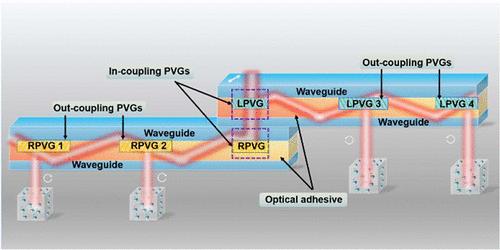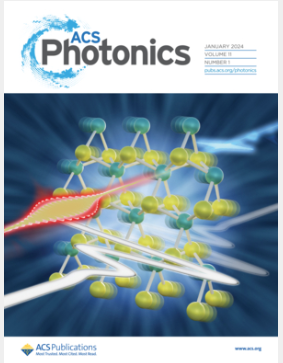Ultracompact and Highly Sensitive Atomic Magnetometer Array via a Polarization Volume Grating-Based Waveguide Structure
IF 6.5
1区 物理与天体物理
Q1 MATERIALS SCIENCE, MULTIDISCIPLINARY
引用次数: 0
Abstract
Ultraweak magnetic field measurement, as one of the quantum precision measurement techniques, holds important significance in the forefront of explorations in physics and advanced medical technologies. The atomic magnetometer, serving as a typical instrument for measuring extremely weak magnetic fields, utilizes the Larmor precession frequency of electrons in alkali metal atoms to quantify magnetic field magnitudes at subfemtotesla levels. Additionally, atomic magnetometers boast advantages such as high sensitivity, miniaturization and high spatial resolution. Hence, arrays of atomic magnetometer sensors have become a reliable solution for measuring ultraweak magnetic fields in spatial dimensions. This paper proposes an ultracompact and highly sensitive atomic magnetometer array integrated structure via a highly stable polarization volume grating (PVG)-based waveguide structure for beam splitting. Instead of the traditional four polarizing beam splitters and polarizors, the structure integrates parallel beam splitting and polarization conversion functions using PVGs, which are then incorporated into an ultracompact atomic magnetometer array. This integration enables high sensitivity magnetic field measurements in four channels. The light separated by the structure exhibits power fluctuations along a single polarization axis below 0.2% during a 30 min period. The overall volume of the proposed integrated structure is approximately 0.6 cm3, representing at least an order of magnitude reduction compared to other spatial optical atomic magnetometer array structures. The final validation demonstrates the system can measure magnetic fields on the order of femtotesla, with an average sensitivity of 16.1 fT/Hz1/2. This approach holds significant potential for applications in quantum precision sensing, high resolution medical imaging, and biological science exploration.

求助全文
约1分钟内获得全文
求助全文
来源期刊

ACS Photonics
NANOSCIENCE & NANOTECHNOLOGY-MATERIALS SCIENCE, MULTIDISCIPLINARY
CiteScore
11.90
自引率
5.70%
发文量
438
审稿时长
2.3 months
期刊介绍:
Published as soon as accepted and summarized in monthly issues, ACS Photonics will publish Research Articles, Letters, Perspectives, and Reviews, to encompass the full scope of published research in this field.
 求助内容:
求助内容: 应助结果提醒方式:
应助结果提醒方式:


